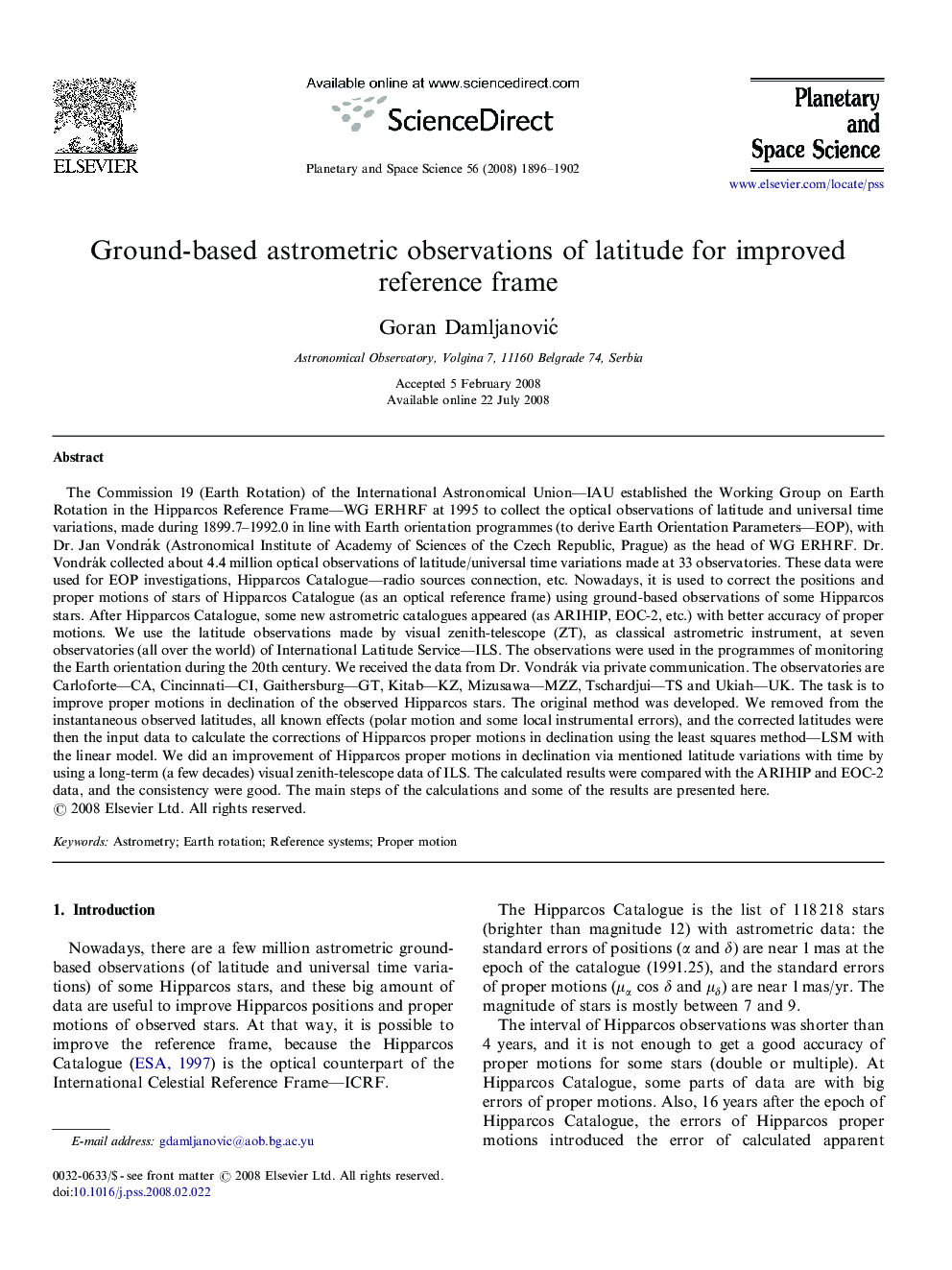| Article ID | Journal | Published Year | Pages | File Type |
|---|---|---|---|---|
| 1782100 | Planetary and Space Science | 2008 | 7 Pages |
The Commission 19 (Earth Rotation) of the International Astronomical Union—IAU established the Working Group on Earth Rotation in the Hipparcos Reference Frame—WG ERHRF at 1995 to collect the optical observations of latitude and universal time variations, made during 1899.7–1992.0 in line with Earth orientation programmes (to derive Earth Orientation Parameters—EOP), with Dr. Jan Vondrák (Astronomical Institute of Academy of Sciences of the Czech Republic, Prague) as the head of WG ERHRF. Dr. Vondrák collected about 4.4 million optical observations of latitude/universal time variations made at 33 observatories. These data were used for EOP investigations, Hipparcos Catalogue—radio sources connection, etc. Nowadays, it is used to correct the positions and proper motions of stars of Hipparcos Catalogue (as an optical reference frame) using ground-based observations of some Hipparcos stars. After Hipparcos Catalogue, some new astrometric catalogues appeared (as ARIHIP, EOC-2, etc.) with better accuracy of proper motions. We use the latitude observations made by visual zenith-telescope (ZT), as classical astrometric instrument, at seven observatories (all over the world) of International Latitude Service—ILS. The observations were used in the programmes of monitoring the Earth orientation during the 20th century. We received the data from Dr. Vondrák via private communication. The observatories are Carloforte—CA, Cincinnati—CI, Gaithersburg—GT, Kitab—KZ, Mizusawa—MZZ, Tschardjui—TS and Ukiah—UK. The task is to improve proper motions in declination of the observed Hipparcos stars. The original method was developed. We removed from the instantaneous observed latitudes, all known effects (polar motion and some local instrumental errors), and the corrected latitudes were then the input data to calculate the corrections of Hipparcos proper motions in declination using the least squares method—LSM with the linear model. We did an improvement of Hipparcos proper motions in declination via mentioned latitude variations with time by using a long-term (a few decades) visual zenith-telescope data of ILS. The calculated results were compared with the ARIHIP and EOC-2 data, and the consistency were good. The main steps of the calculations and some of the results are presented here.
